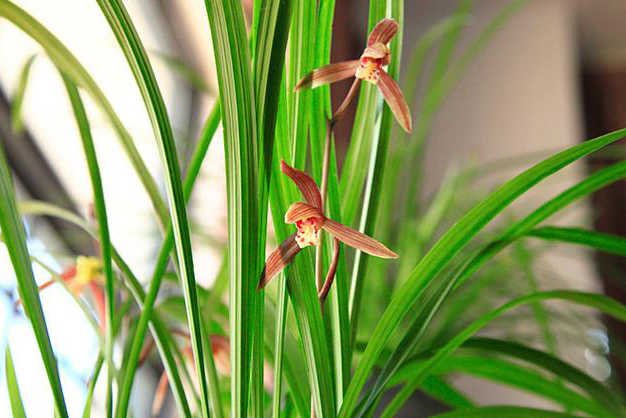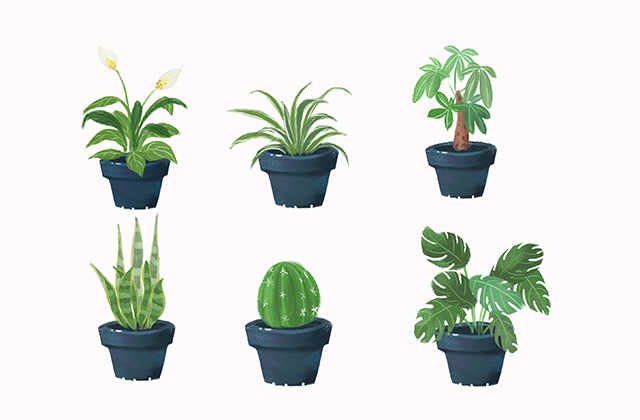How to raise Hanlan's breeding methods and precautions
Hanlan's breeding method and precautions
1. Soil
Hanlan is suitable for growing in soil with loose and breathable and well -drained. When planting, it can use 40%of river sand, 35%of black humus soil, 15%of the wood chips, and 10%of fern roots mixed with soil.Cultivate the diarrhea and disinfection to avoid cold orchid infection with diseases and insect pests.
2. Light

Han Lan likes to grow in a half -yin environment and is not tolerant.Therefore, when maintenance, pay attention to lighting, usually placed in the semi -yin, and the weak astigmatism can meet the demand for light.If the light is too strong, the plants are prone to sunburn, which will affect flowering.Usually it is placed in the astigmatism in spring and autumn.
3. Temperature
Hanlan's high temperature resistance and cold resistance are not strong, and they are more sensitive to temperature.I like to grow at a temperature environment between 18 degrees and 28 degrees.In summer, temperature should be controlled at high temperature, spray water, and ventilates, so that the temperature is below 30 degrees.Move to the room at low temperature in winter, and the temperature control is above 10 degrees to avoid frostbite.
4. Watering
Han Lan likes the environment with high humidity. During the maintenance period, watering, spraying water, and maintaining a certain humidity should be maintained.Especially in summer high temperature, when the climate is dry.However, it should be noted that the amount of watering should not be too much. There must be no stagnant water in the soil, otherwise the root system will be easily rotten.Especially in winter, water control must be controlled in low temperature environments.
5. Fertilization
Han Lan has less Fertilizer, and only needs to apply diluted liquid Fertilizer every ten days in the peak growth season.You can also use leaf spray to add leaf surface Fertilizer to Hanlan, which can make the leaves of orchids more green and strong, and prevent root Fertilizer.
6, humidity
Han Lan likes the growth environment with a slightly dry pot soil and a large air humidity.Therefore, it is planned to plant 55%-75%during the day, and the relative humidity of not less than 80%at night can be used. It can be used with humidifiers, automatic spraying, Hanging water curtains, sprinkler on the ground, and moisturizing pools or water basins.The humidity of the air should be maintained between 65%and 85%, and the air humidity during dormant during winter should be 50%-60%.
7. Pests and insect prevention
(1) anthracnose
Timely cutting the disease in time and burning the diseased body.
The method of improving watering is to inject the water from the edge of the Flower pot.
Spray 50%of the 500-600 times liquid at the beginning of the onset, while strengthening ventilation and light transmission to avoid leaf surface spraying.
(2) Leaf blight
Remove the diseased leaves and the diseased body concentrated and burned.
Pay attention to ventilation and light transmission to prevent excessive watering, and avoid spraying plants directly.
Use 50%todtin 600-800 times liquid to spray.Once every 10 days, it can be sprayed 3-4 times in a row.
(3) White silk disease
Timely remove the diseased leaves, diseased plants, and disease points in time, which can be disinfected by lime; 1000 times the water removal agent of 30%soil seedlings is drenched with a 30%soil seedlings.
1: 500 times perbal -clearing the leaves and roots at the beginning of the onset.
(4) Sicatinworm
When a small amount occurs, it can be removed with a soft brush and then cleaned with water.
For more than a long time, it can be sprayed with 40%of the rapid emulsion 1000 times solution during the incubation period.The positive and back of the leaves should be sprayed on the back of the medicine for 3-4 times in a row. Each interval is 5-7 days, it is basically extinct.
(5) Red Spider
The quantity is small, and you can use a brush or a small brush to remove.
Most of the 40%trichlotate is killed by 1000 times liquid.
The soil method is lit with a plate of mosquito coils, placed in the basin of the diseased plant, and puts it in a pot with a plastic bag. After 1 hour of smoke, it is killed, regardless of eggs or adults, and does not affect the plant.


